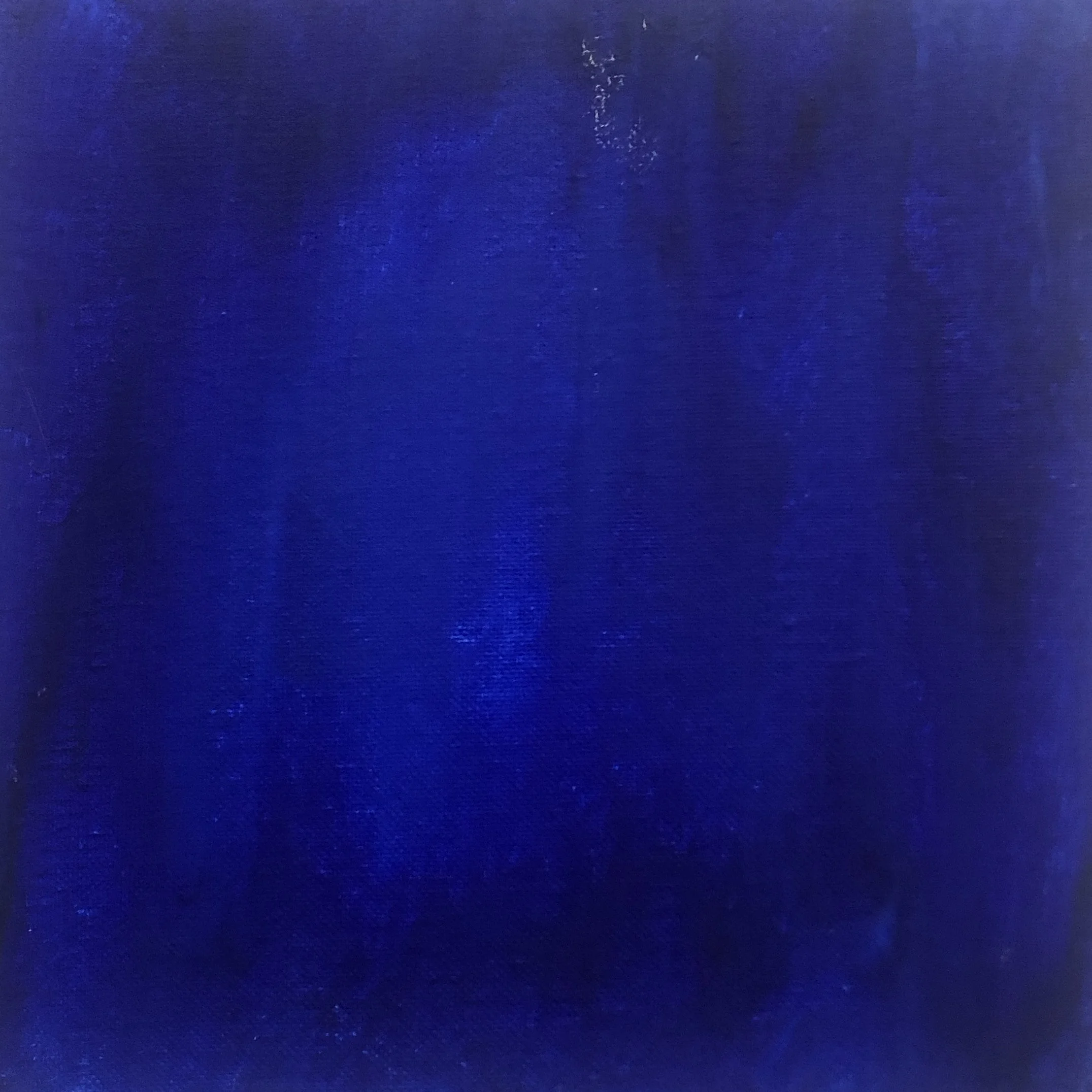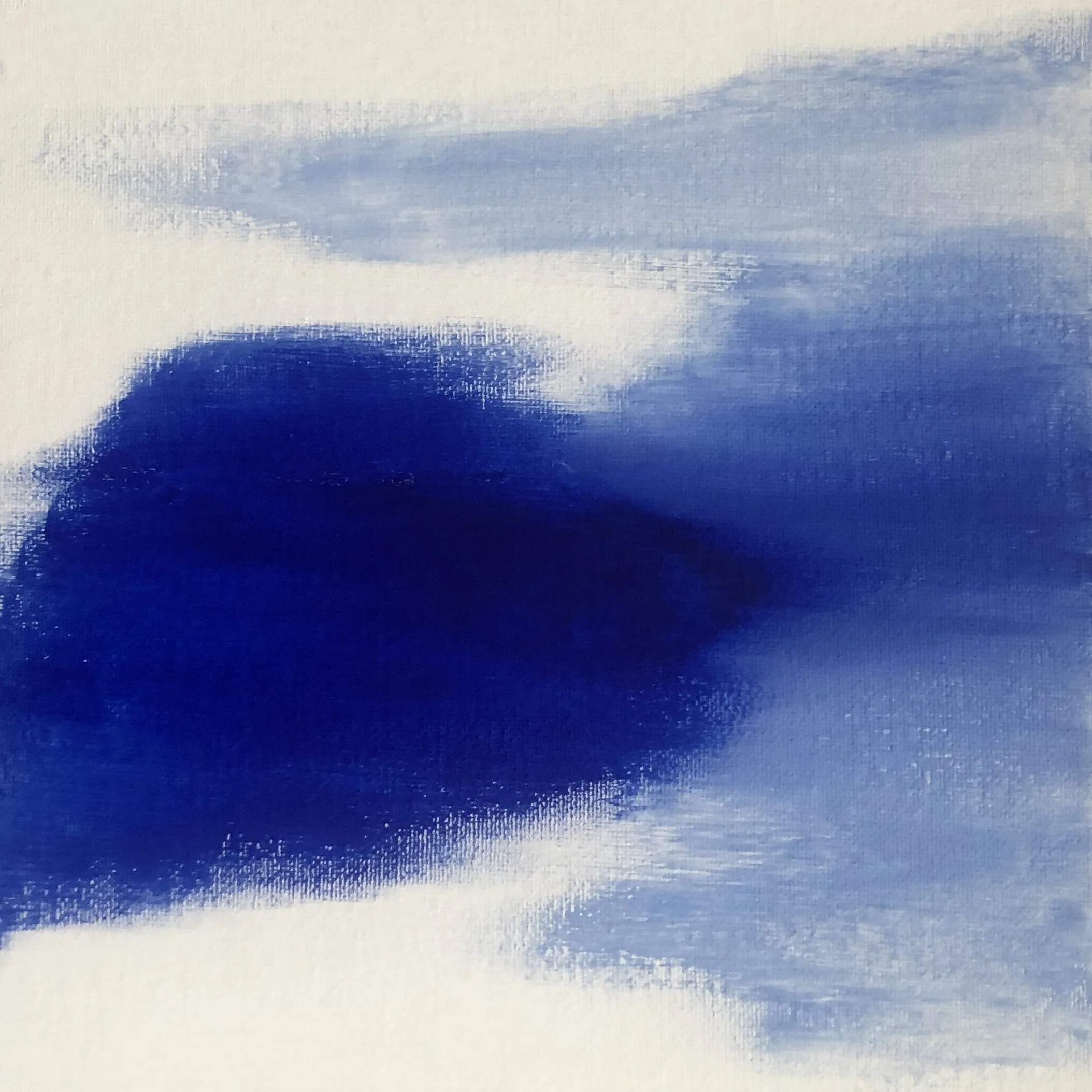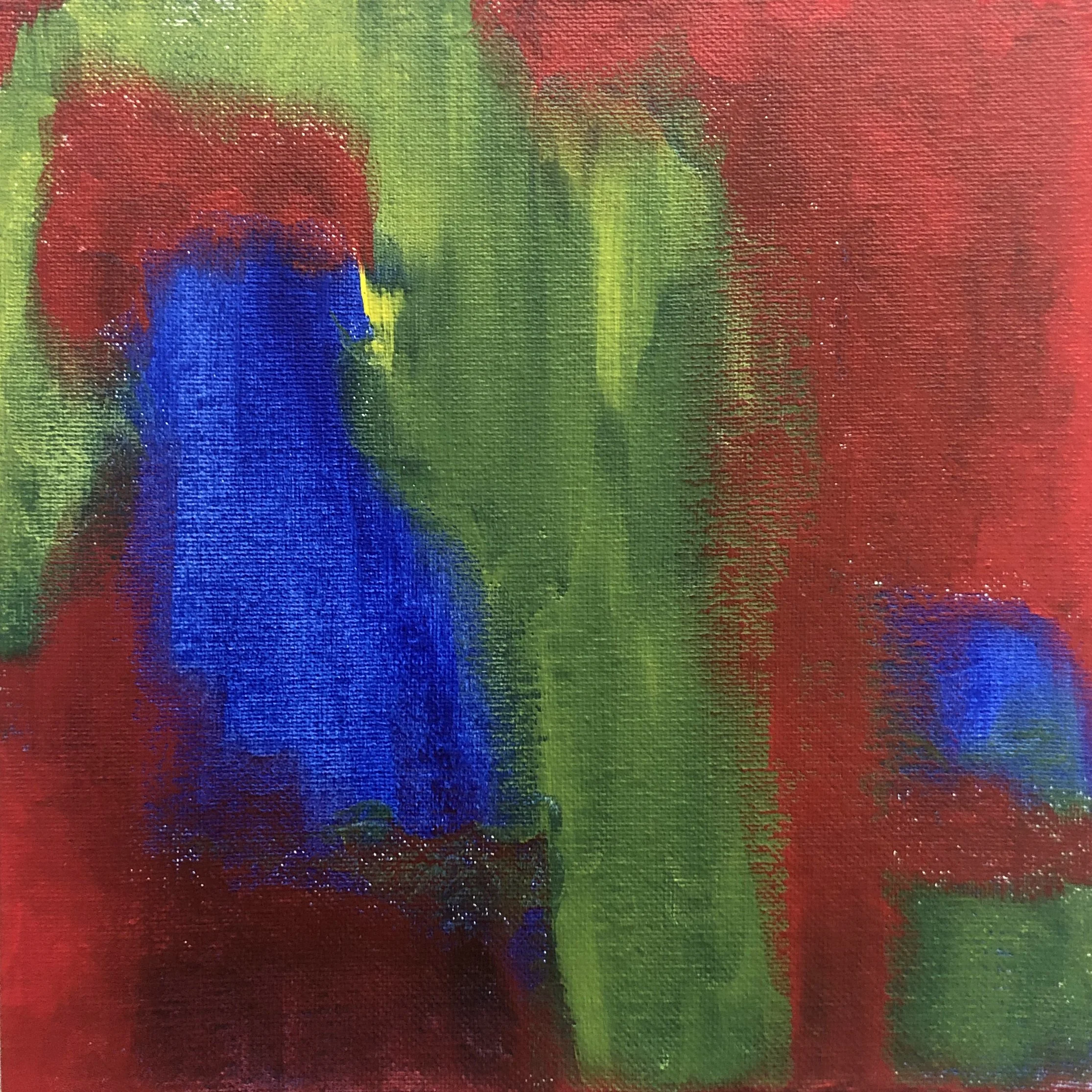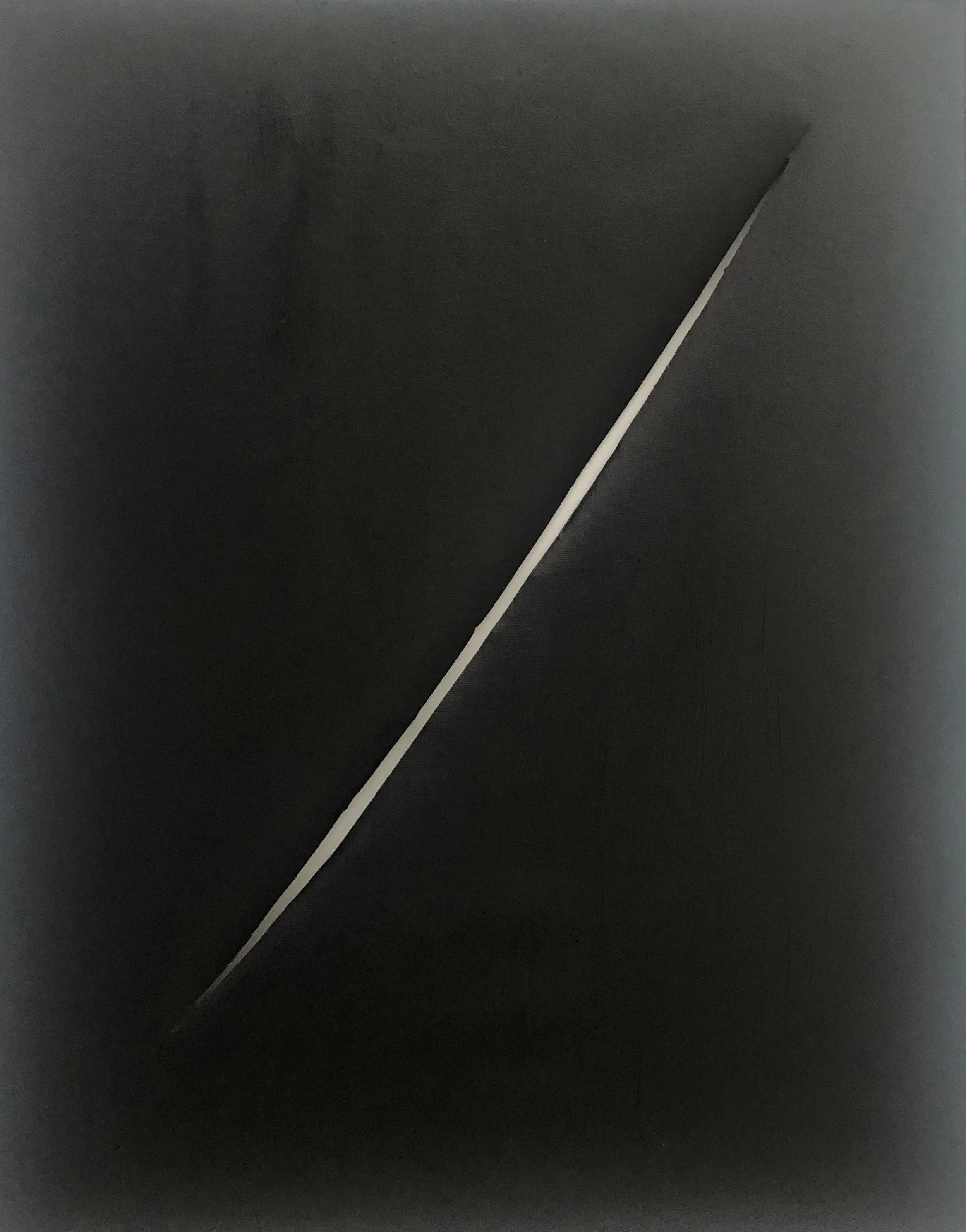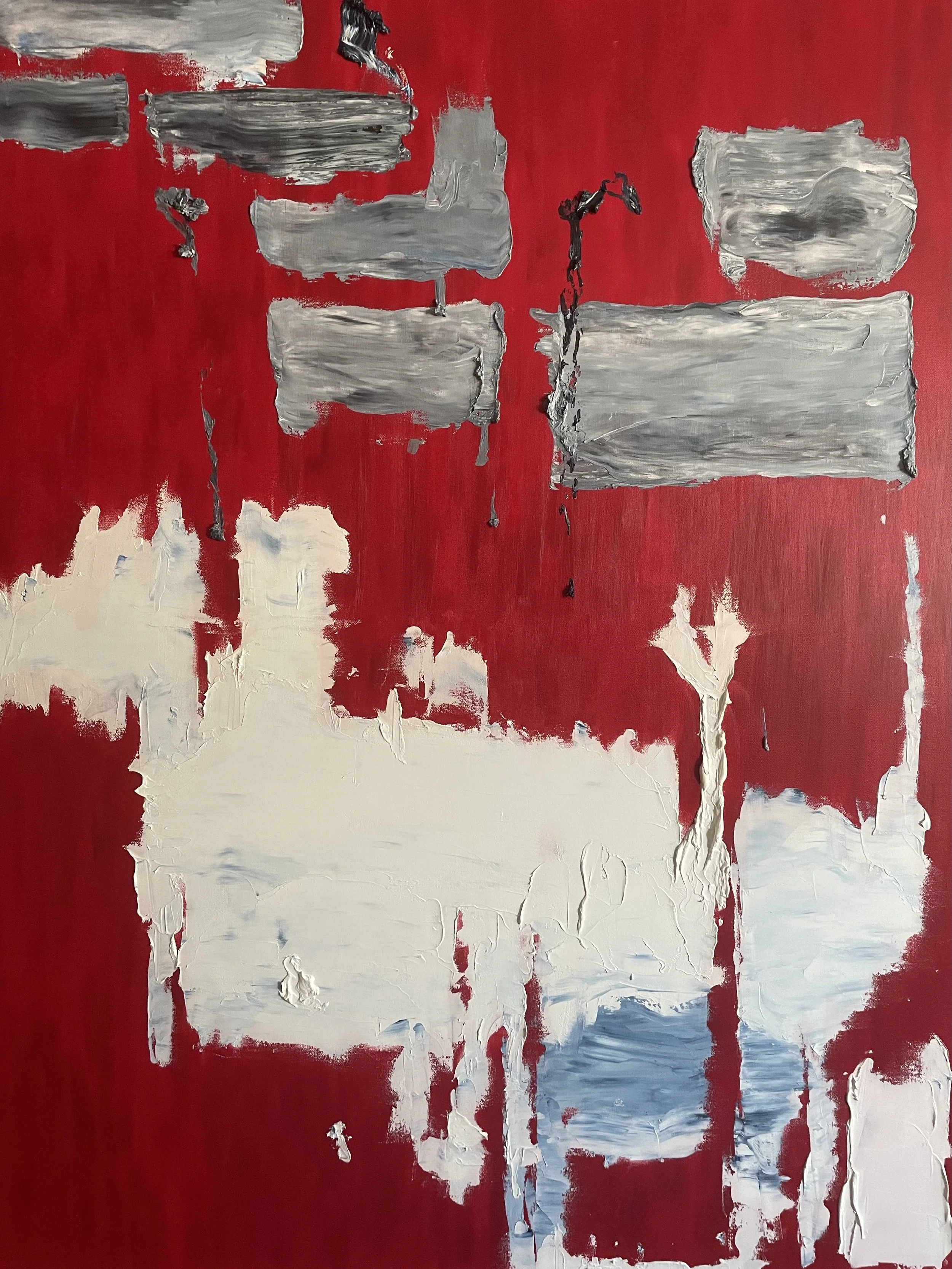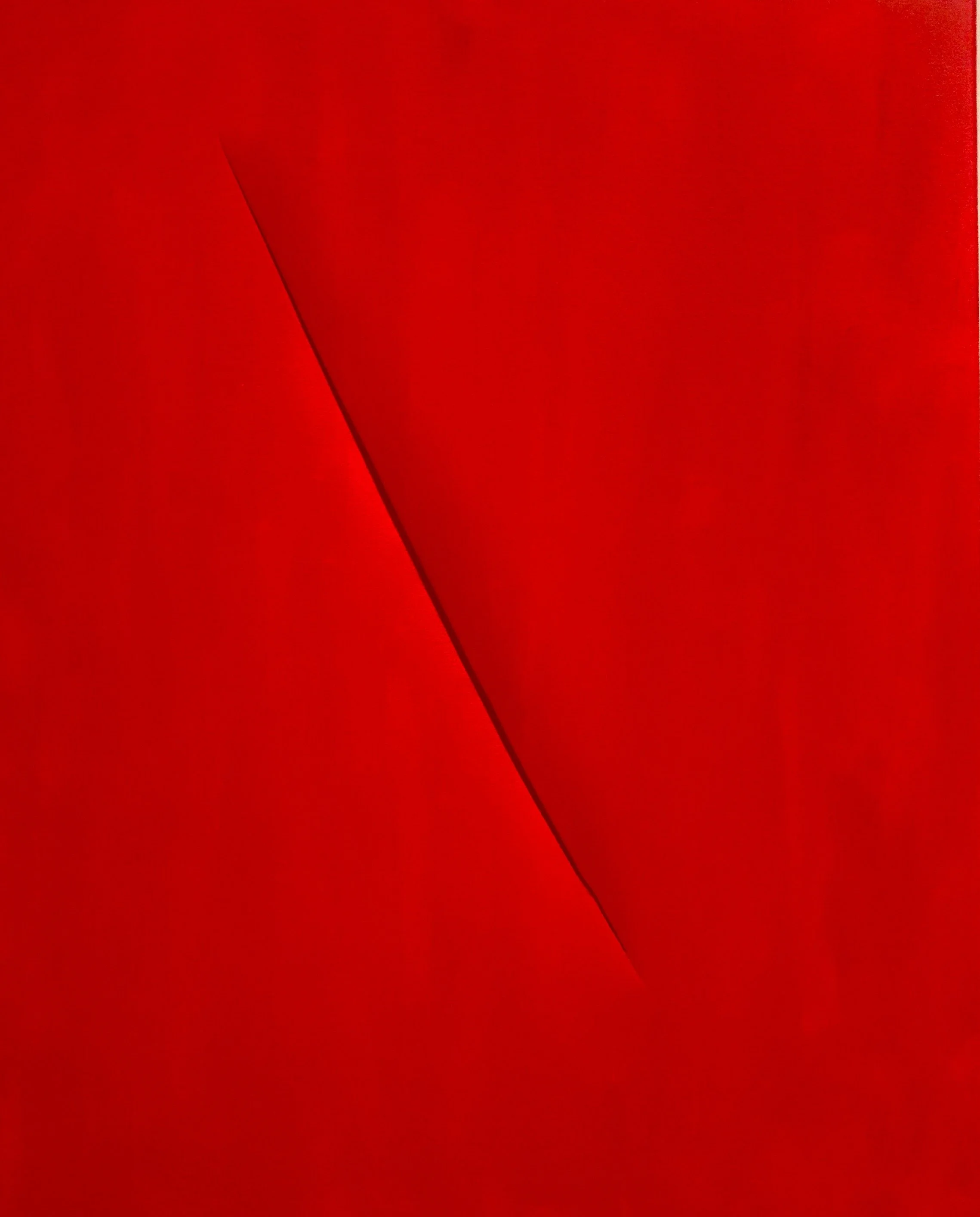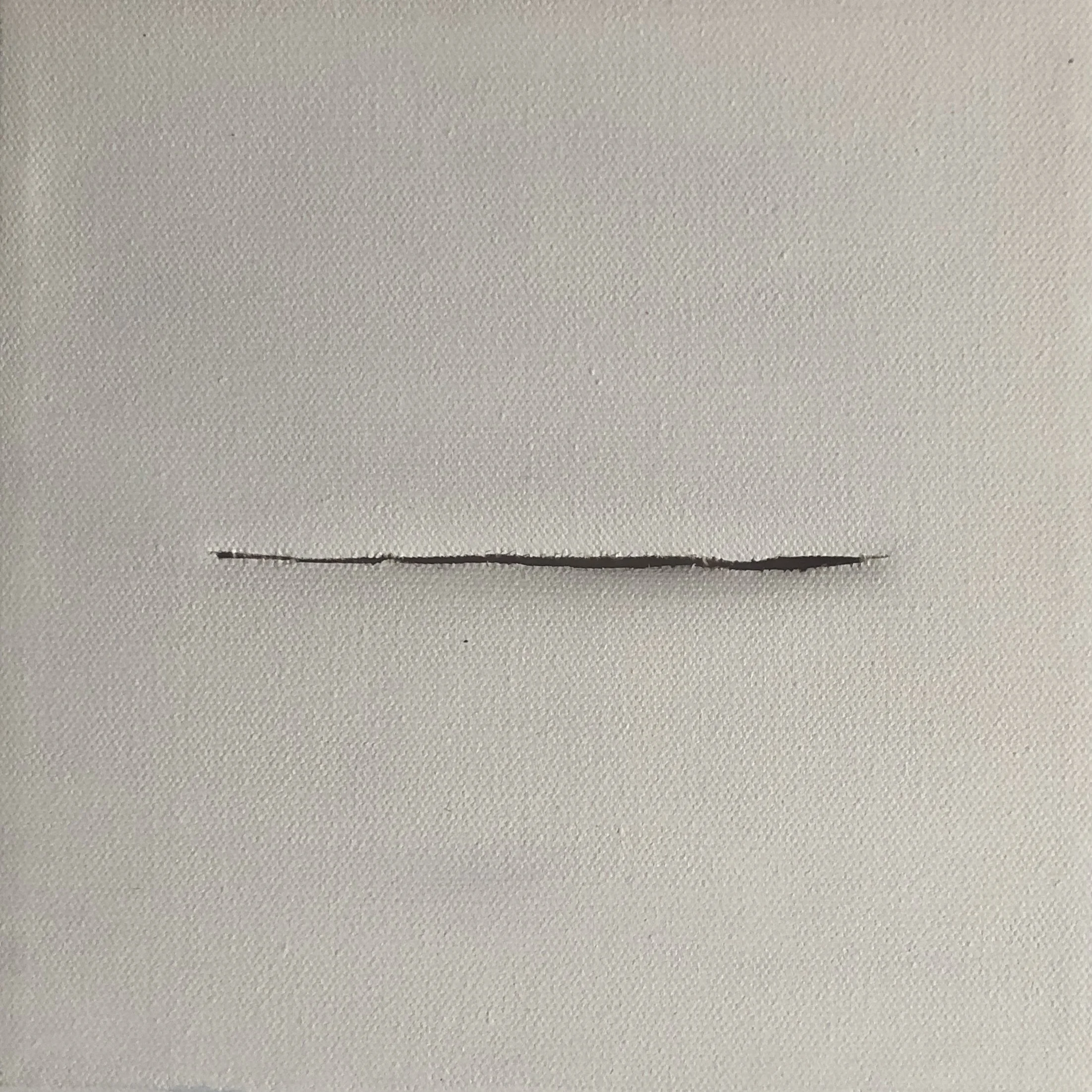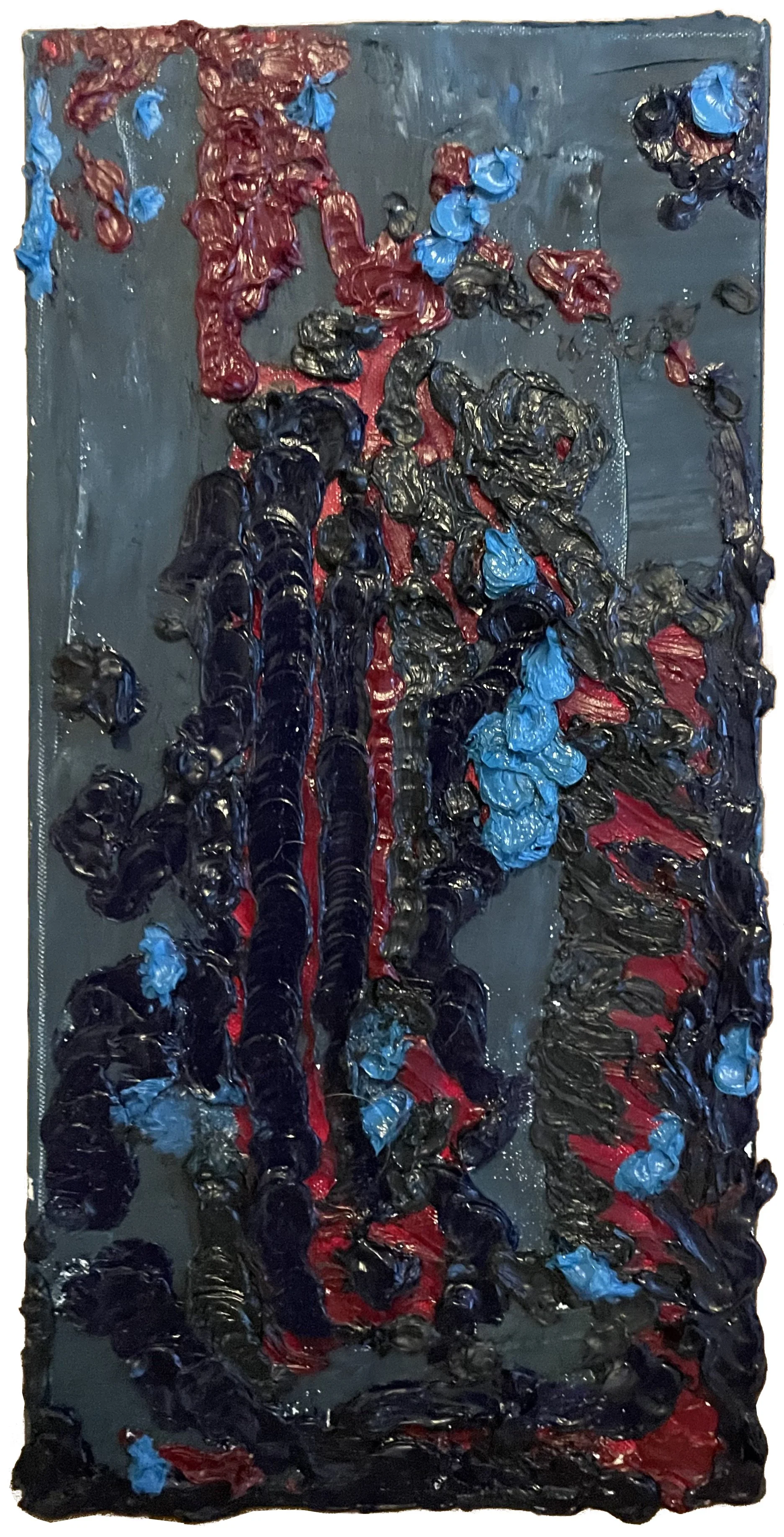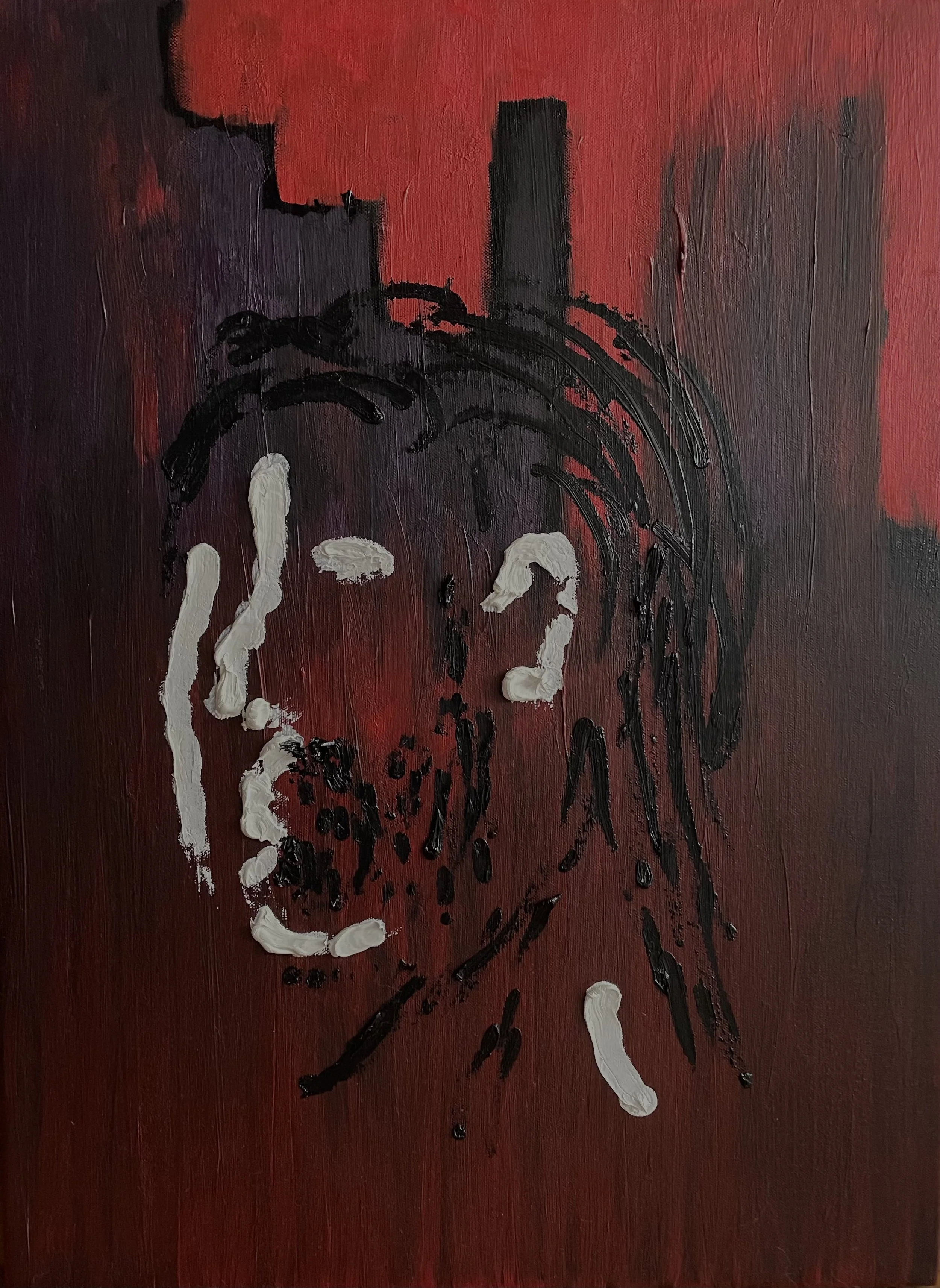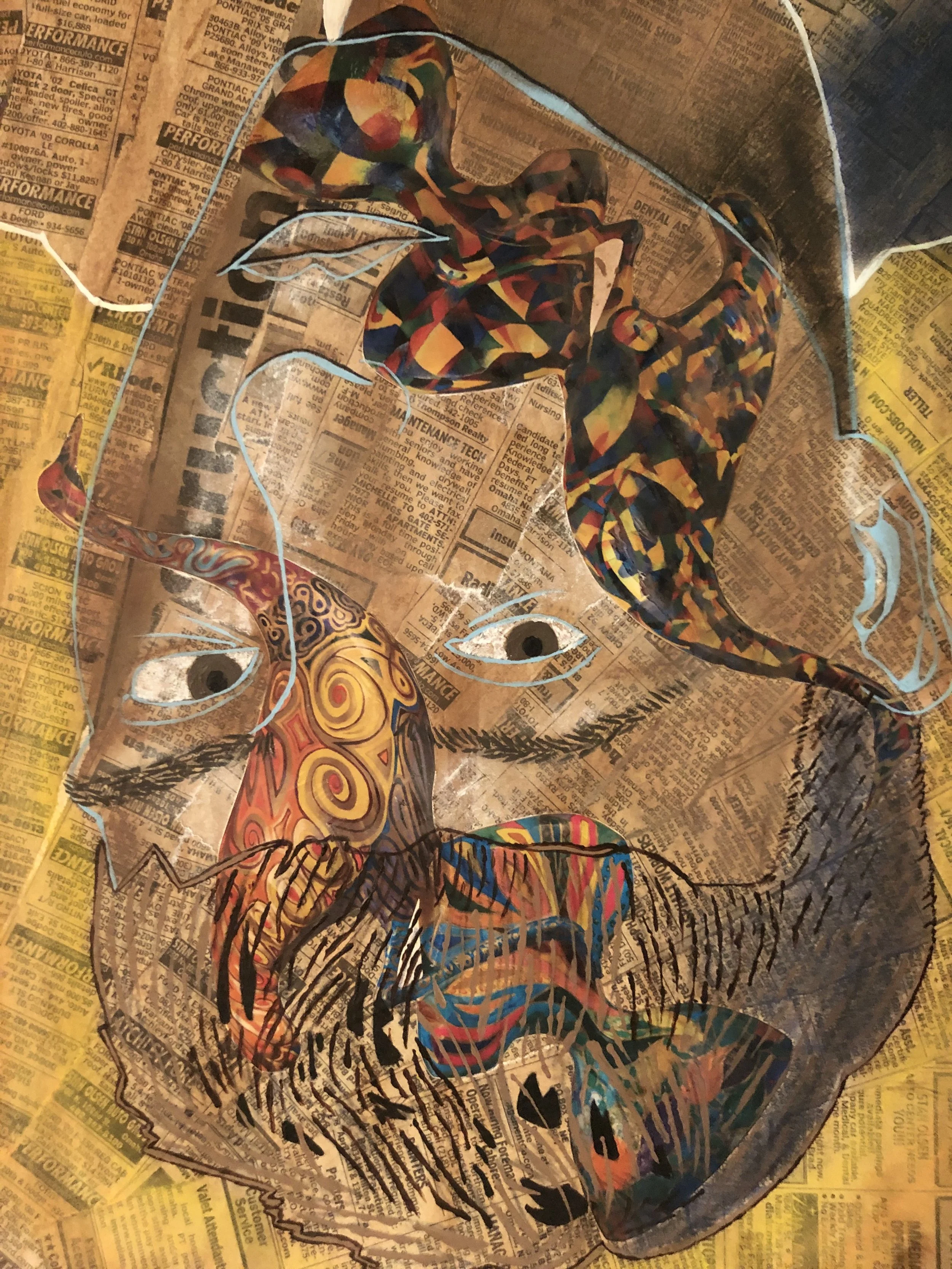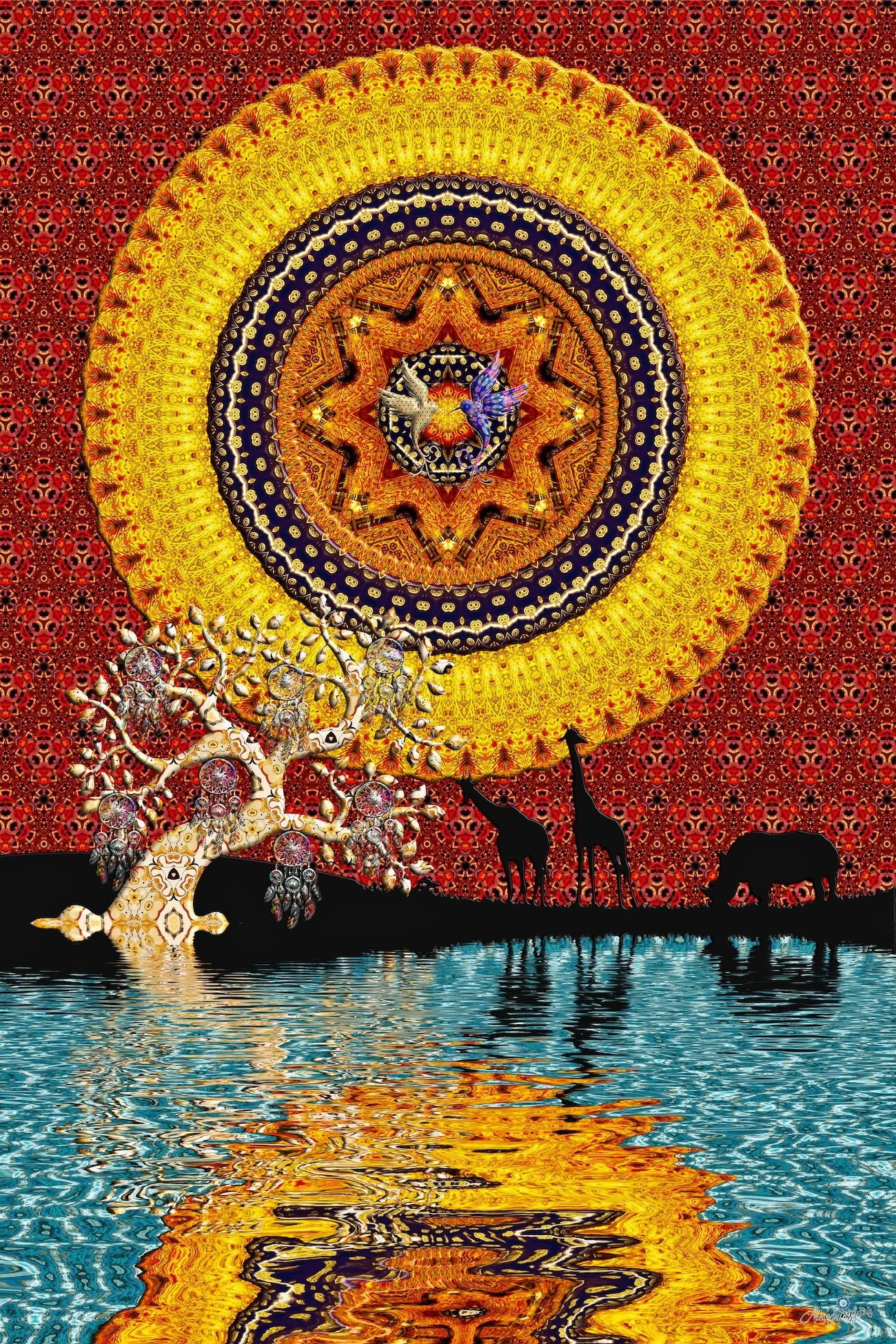Interview with Zebulun Lund
Your work often blends architectural concepts with visual art. Can you elaborate on how your background in architecture influences your artistic process, particularly in creating pieces like those in the 'Fontana Studies'? How do these disciplines intersect in your mind and your practice?
'Fontana Studies' is a product of process exploring what Lucio Fontana pioneered in cutting into canvas. His slices are exquisite. I hope someday that my work can be as provocative and emotive. My interest in Fontana's work is almost certainly tied directly to my interest in architecture. Space, Form, Texture, and all associated characteristics of the physical world are attractive. I cannot determine where these disciplines intersect as I've always struggled to separate them.
In your 'Blue Studies' series, the use of the color blue is predominant. Can you discuss the significance of this color in your work, both aesthetically and symbolically? How do you approach the emotional and psychological impact of color in your art?
The use of the color blue has no specific significance that I can identify. I speculate that its appeal lies in its ties to elements of space and time. Hues of blue are a place I've always been able to find comfort. The best time of day is twilight and the daily uncertainty of day or night. Shadows are weird and disappearing. It is really spectacular. Additionally, it is possible can both get comfortably lost and take refuge in skygazing. It is difficult to beat a good cloud day.
I couldn't comment on the emotional or psychological impact of color in my art. It is something I can feel from others' works. I can occasionally glimpse it in my finished work, but mostly am in a temporary transfixed state of being through pushing paint, pen, or wood around.
Your website mentions that your work is not intended for any specific audience. How does this open-ended approach affect your creative process and the themes you choose to explore? What do you believe is the value of creating art without a targeted demographic in mind?
Oh man, what loaded questions! I should have an asterisk next to that stating I don't think any art is truly devoid of having a specific audience. I'm just not sure that is possible, no matter one's intentions. My intention of making is almost exclusively for myself. Of course, I hope others come along and connect with it. I find that is the joy and suspect that the whole point of art, is our human condition. It has to be for others as much as for myself. All that is to say it has to chiefly be an expression of my own feelings or thoughts before it can come out of any use to others.
For all the freedom this might bring in value, it does likely limit what my art is capable of. If I am not making it for others, first, it does run a risk of never evolving in skill or concept. I hope the value it brings to my work is honesty. If nothing else, I can hope that for anything created, especially if others see.
The 'Decline' series explores symbols of American values and their evolution over time. What motivated you to focus on these themes, and how do you see your work contributing to the broader conversation about American cultural identity and its transformations?
I am from Nebraska. Themes about homesteading, pioneering, and manifest destiny have been present for as long as I can remember. I think it's curious that all of these structures were made 150, 100, 50, even 15 years ago in the spirit to establish something. There is a sort of rah-rah about these things, aspects both more or less innocent. Now they are being whisked away and returned to nature by herself and in many cases as if they'd never existed. It's really quite spectacular phenomenon. I'm more interested in asking the general question about the specific observation than I am making any statements on Amercian cultural identity and transformations. They certainly exist; I'm simply not smart enough to conceive of or make any comments for my works contributions to these conversations.
Architecture and rural roots are recurring themes in your artwork. Can you describe how your upbringing in Nebraska has shaped your artistic vision? How do these elements manifest in your work and what stories are you trying to tell through them?
My town was made of less than 1,000 people. Our sideyards were cornfields and backyard had farm animals. It was in many additional ways a quintessential Americana understanding of life. This relationship of space, time, and money was simplified and it was "good". I've found the flatness and depth are at a strange position of recognizable but not perceptible. Things are rustic but nothing is refined. Seasons are real and everything is in constant process. I suppose this has followed me into architecture and I would project that I don't see any work as "finished". Eventually I just stop.
There are no specific stories that I'm seeking to tell. If I can capture the feelings that I have alone in the middle of a pasture or cornfield, or what is felt in the Pantheon, Sagrada Familia, or Craters of the Moon National Park, I'd be happy. The Human condition is extraordinary.
You describe your work as an exploration of space, time, and the human condition. Can you provide an example of a piece where these themes are particularly evident and explain the conceptual and technical approaches you used to convey them?
Whoof. I can't say I experienced any of these in any "finished" pieces of my own. I've routinely experienced these in pieces by Rothko, Fontana, Piranesi, Bernini, Francis Bacon, and Georges Braque. The only conceptual and technical approach I can even consider is copying and appropriation, until hopefully someday my work can evolve from that to stand on its own in the way that those names I just mentioned. along with countless others stand.
Collaboration and maintaining good company are noted as one of your strengths. Can you share some insights on how working with other artists or professionals has influenced your work? Are there any specific collaborations that have significantly impacted your creative journey?
I would list any collaboration as a significant impact. Working with Hilary Wiese has probably been my favorite experience. Both collaboration and maintaining good company I find vital for producing anything worthwhile. I've also had a good experience collaborating with Samah Al Sarhani. Our collaborations have led work to some unresolved pieces with the potential to become interesting.
Your series such as 'Fontana Studies' and 'Blue Studies' showcase a diverse range of styles and themes. How do you balance continuity and diversity in your body of work? What strategies do you employ to ensure each series maintains its unique identity while contributing to your overall artistic narrative?
Oh man. I'm not sure that I do a good job of balancing much of anything! I'm lucky with whatever continuity occurs in my work. I'm sure it exists, but I'm not sure that I'm an individual who possesses either the skill or intention to fully break from one theme or agenda and move to another completely unrelated one. Related to the previous question, I think that one of the most important reasons for collaboration is the diversity it can bring to my work. I think a continuously growing range of interests - which are all related through references - contributes the diversity.
My strategy for ensuring any series, especially the studies, maintains a unique identity is to not overcomplicate them. When I set out to study how a material performs, or what a technique is capable of, I try to of course make sure it carries some aesthetic weight. What is most important, however, is to ensure that the study is true to itself and that it is as extensive as it should be for itself and in relation to other series. The study is always a goal to discover or learn and that alone I find keeps them unique to themselves.
Looking forward, what new projects or themes are you excited to explore in your future works? How do you see your artistic practice evolving in the coming years, and what new challenges or questions are you eager to tackle through your art?
I am most excited to keep entwining my architecture education, practice, and study into all artistic endeavors. These two fields are at their core different in that their obligations are not the same. I am interested in their overlap though. Delving into this space, pushing, and shrinking it. I hope to keep exploring aspects of space, time, and material, what they say to us and each other, and what conversations I will have with them.


